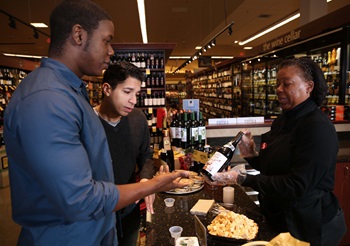By: Leslie G. Sarasin, President  I have a confession to make. It bothers me that the most popular feature in FMI’s Food Retailing Industry Speaks report is the section dubbed the Worry Index. As a good-news oriented, lets-find-the-opportunity–here kind of person, it troubles me that the piece of FMI research posed for annually providing a snapshot of the state of the food retail industry tends to focus on concerns and apprehensions.
I have a confession to make. It bothers me that the most popular feature in FMI’s Food Retailing Industry Speaks report is the section dubbed the Worry Index. As a good-news oriented, lets-find-the-opportunity–here kind of person, it troubles me that the piece of FMI research posed for annually providing a snapshot of the state of the food retail industry tends to focus on concerns and apprehensions.
Some may argue it makes sense that the Worry Index has been the characterizing feature of a piece capturing the essence of food
Others may argue that in recent years a focus on the worry index has been appropriate. The past decade has seen
All these reasons make it even more significant that the 2018 version of the Food Retailing Industry Speaks initiates a significant move from the Worry Index to a reconfiguration that we have titled, Food Retail Pulse. In analyzing the data from the questions that historically contributed to the worry index, we found this year that as many factors potentially contributed positively to sales and profits as there were factors negatively affecting the bottom line. Topping the downside of the ledger (qualities with a largely negative impact) were some old familiar friends, including
Shoppers recognize food retailers as trusted allies in helping them achieve their health goals, so it should be no surprise that the two categories with the most positive promise concentrate on the retailer’s role as a curator of healthy products and health information. Retailers recognize the opportunity to shine in the snack category by paying attention to the consumption trend away from three square meals a day and toward smaller, more numerous snack opportunities. And truly savvy retailers are finding a real sweet spot where helping with health goals overlaps with providing more snack options. Rounding out the top potential growth areas, retailers are recognizing that shoppers’ expectation, hope
I cordially invite you to join me as I elaborate on these factors and share more good news about the food retail industry when I present our Speaks findings in a webinar on October 4 at 11 a.m. Click here to register for the webinar.
 Industry Topics address your specific area of expertise with resources, reports, events and more.
Industry Topics address your specific area of expertise with resources, reports, events and more.
 Our Research covers consumer behavior and retail operation benchmarks so you can make informed business decisions.
Our Research covers consumer behavior and retail operation benchmarks so you can make informed business decisions.
 Events and Education including online and in-person help you advance your food retail career.
Events and Education including online and in-person help you advance your food retail career.
 Food Safety training, resources and guidance that help you create a company food safety culture.
Food Safety training, resources and guidance that help you create a company food safety culture.
 Government Affairs work — federal and state — on the latest food industry policy, regulatory and legislative issues.
Government Affairs work — federal and state — on the latest food industry policy, regulatory and legislative issues.
 Get Involved. From industry awards to newsletters and committees, these resources help you take advantage of your membership.
Get Involved. From industry awards to newsletters and committees, these resources help you take advantage of your membership.
 Best practices, guidance documents, infographics, signage and more for the food industry on the COVID-19 pandemic.
Best practices, guidance documents, infographics, signage and more for the food industry on the COVID-19 pandemic.
